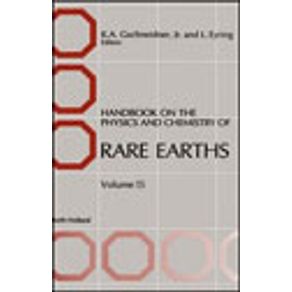Volume 15 in this series continues the voyage of discovery started almost a decade ago.Chapter 98 adds significantly to an evaluation of systematic, experimental low-temperature studies of the ambivalent behaviours of cerium (ferromagnetism, antiferromagnetism, spin glass, superconductivity etc.) which depend upon its environment in materials. The conclusions arrived at should provide new data against which the theory can be advanced.The next chapter provides a review of rare earth carbides, emphasizing the thermodynamics, phase diagrams, crystal structures and physical properties. The binary rare earth carbides present an exceptionally wide range of compositions and structures both as solids and gas-phase molecules. Complex carbides with additional metal and non-metal components also receive attention.Metal-rich halides (i.e. compounds with an X/R ratio <2) are the subject of the next chapter. The compounds are classified according to their structure and chemical bonding characteristics and their electrical and magnetic properties are also reviewed.Chapter 101 deals with the preparation, structure, chemical and physical properties of heavy-metal fluoride glasses. Large amounts of rare earths can be added into these, and they possess a great potential for optical applications in the mid-infrared range as fiber optic glasses for communication and transmission of information, optical wave guides, fiber lasers and sensors.The following chapter explores the chemical kinetics of solvent and ligand exchange in aqueous lanthanide solutions. A wealth of tabulated information on rate and equilibrium constants is provided in textual and tabular form. Chapter 103 considers the fundamentally important reactions of the lanthanide ions with water. These interactions are discussed for both solids and solutions. The hydrated species are considered in detail for the aqueous solution, revealing the consequences of the lanthanide series sequence.The concluding chapter reviews macrocyc


